Many poets have written about mental health or struggled with depression themselves. Discover the most impactful depression poems by poets through the ages.
The mind and our innermost emotions are often the realms of poets, so it’s no surprise that depression is a subject that writers have regularly broached from antiquity to the present day. Poetry can be a powerful medium to describe and reflect on mental illness, grief, and feelings of profound sadness.
As readers, these poems may help us with our sadness or better understand what it’s like to suffer from depression. If you’re interested in this topic, check out our round-up of the best inspirational poems!
Contents
- Here Are The Top Poems About Depression
- 1. John Keats, “Ode on Melancholy”
- 2. Anne Sexton, “After Auschwitz’
- 3. Sylvia Plath, “Tulips”
- 4. Emily Dickinson, “The Saddest Noise, the Sweetest Noise”
- 5. William Shakespeare, “Sonnet 29”
- 6. Edgar Allan Poe, “A Dream within a Dream”
- 7. Mary Oliver, “Heavy”
- 8. Philip Larkin, “Sad Steps”
- 9. Henry Wadsworth Longfellow, “The Rainy Day”
- 10. Robert Frost, “Acquainted with the Night”
- 11. T.S. Eliot, “The Waste Land”
- 12. Emily Dickinson, “It Was Not Death”
- 13. Alison Pick, “Depression”
- 14. Jane Kenyon, “Having it Out with Melancholy”
- 15. Henry Howard, Earl of Surrey, “The Soote Season”
- 16. Stevie Smith, “The River God”
- 17. Anne Sexton, “The Fury of Rainstorms”
- 18. Sylvia Plath, “Mirror”
- 19. Christina Rossetti, “Shut Out”
- 20. Elizabeth Bishop, “One Art”
- 21. Edgar Allan Poe, “Alone”
- 22. Mary Oliver, “Wild Geese”
- 23. Anne Sexton, “Wanting To Die”
- 24. A.E. Housman, “Tarry Delight, So Seldom Met”
- 25. Philip Larkin, “Aubade”
- 26. Mary Oliver, “Don’t Hesitate”
Here Are The Top Poems About Depression
1. John Keats, “Ode on Melancholy”
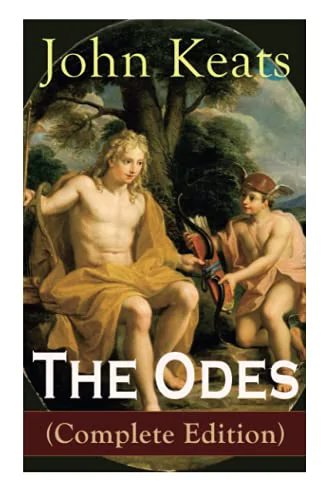
This beautiful poem by Keats is a call to embrace feelings of sadness: We should work through them rather than seek relief, he counsels. It’s also a gentle reminder that we must appreciate the happy times and good things in our life, as, just as with everything else, these are ephemeral.
After all, “When the melancholy fit shall fall / Sudden like heaven from a weeping cloud, ” these happy memories can help us endure the more challenging times. “Ode on Melancholy” was written in 1819 and is considered one of Keats’s most powerful poems. As a reflection on feelings of depression, it accurately depicts profound sadness and serves as a poignant meditation on the best ways to cope with these feelings – and how not to.
“His soul shalt taste the sadness of her might.”
John Keats, “Ode on Melancholy”
Check out this poem on Amazon; click here.
2. Anne Sexton, “After Auschwitz’
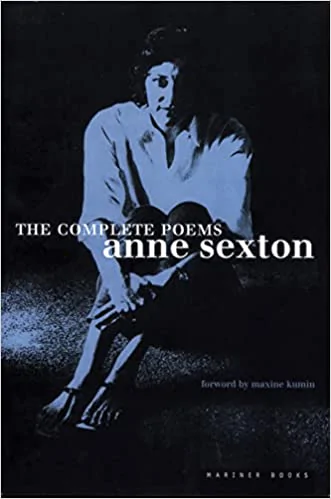
A poem that reflects powerfully on how humanity can respond to the Nazi atrocities, including those committed at the Auschwitz death camp. It’s almost unbearably sad in its raw rage and loss that can never be assuaged.
Every day, Sexton is assailed by the knowledge of what has happened and is tormented by grief and a sense of gnawing injustice. The real depression inherent in “After Auschwitz” comes from the writer’s conclusion that humanity will always have the capacity for great evil, which cannot be changed.
“Man with his small pink toes, / With his miraculous fingers / Is not a temple / But an outhouse.”
Anne Sexton, “After Auschwitz”
Check out this poem on Amazon; click here.
3. Sylvia Plath, “Tulips”

Sylvia Plath is one of the most famous poets for writing on depression. First published in the collection Ariel in 1965, “Tulips” is a deeply personal poem that explores Plath’s mental health and inner emotions while in hospital after undergoing an appendectomy. Themes within the poem include confinement, death, and sickness, elements that Plath returned to recurrently in her work.
The flowers of the title are an unwelcome reminder of life and its struggles – something the narrator had temporarily escaped from while in hospital and under the effects of anesthesia. Their vividness both recalls the chaos of life and a sense of amputation – or dislocation. The blooms seem out of place in the sterile whiteness of the ward.
Ultimately, “Tulips” is about life triumphing over death. Or, more specifically, about the powerful pull of life that brings the narrator back from the soothing numbness of near-death.
“The tulips are too excitable, it is winter here.”
Sylvia Plath, “Tulips”
Check out this poem on Amazon; click here.
4. Emily Dickinson, “The Saddest Noise, the Sweetest Noise”
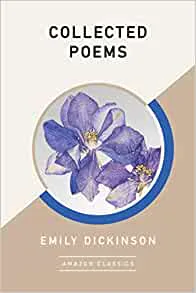
Like most of the poems by Emily Dickinson, this piece wasn’t published until after her death. “The Saddest Noise, the Sweetest Noise” is one of several short poems she wrote and first appeared in 1955 in the volume The Complete Works of Emily Dickinson.
The five-stanza poem is a bitter-sweet reflection on the springtime birdsong the narrator is enjoying. As beautiful as the sound is, the narrator can’t help but think of those dear to her who have passed away and can no longer appreciate such beautiful moments.
“It makes us think of all the dead / That sauntered with us here.”
Emily Dickinson, “The Saddest Noise, the Sweetest Noise
Check out this poem on Amazon; click here.
5. William Shakespeare, “Sonnet 29”

Featuring the famous line, “I all alone beweep my outcast state,” this poem dwells on the narrator’s perceived misfortunes. According to the speaker, what makes things even worse is that so many other folks around him are basking in success – something we can all identify with. However, Sonnet 29 ends more optimistically, concluding that however hard life may be, love is a panacea, whatever the injuries one suffers.
This poem is traditionally believed to have been written for a young man and is thought to have been composed sometime in the 1590s. T.S. Eliot, who appears later in this list, uses a quote from Sonnet 29 in his poem Ash Wednesday, published in 1930.
“For thy sweet love remembered such wealth brings / That then I scorn to change my fate with kings.”
William Shakespeare, “Sonnet 29”
Check out this poem on Amazon; click here.
6. Edgar Allan Poe, “A Dream within a Dream”
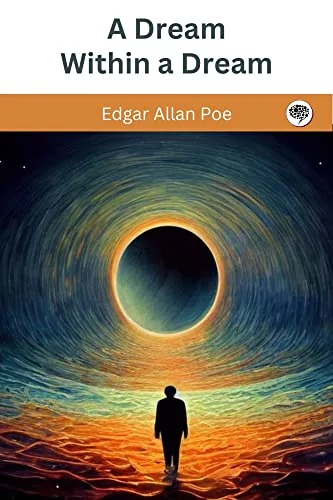
The title of this poem might be one of the most famous lines in English literature, but many people aren’t aware that the subject of “A Dream within a Dream” is depression. Poe’s poem reflects on what he feels is the purposeless nature of his life. He imagines himself floating, loveless and without direction, through a dream and “standing amid the roar / Of a surf-tormented shore.”
For many readers who have experienced depression, this dreamlike state is familiar and an effective way of summing up the state of aimlessness that the condition can engender and the difficulty of shaking off this sensation.
“All that we see or seem / Is but a dream within a dream.”
Edgar Allan Poe, “A Dream within a Dream”
Check out this poem on Amazon; click here.
7. Mary Oliver, “Heavy”

As a tribute to the grieving process, few poems cut as close to the bone as “ Heavy” by Mary Oliver. It’s a searingly honest piece that’s almost painful to read. When the narrator relates how, in the depths of her grief, she feels “I could not go any closer to grief without dying,” most of us will, to some extent, relate to this sense of profound loss.
However, the poem is also a powerful testament to the resilience and strength of the human spirit. Despite her pain, the narrator remains committed to seeing the beauty and inherent worth in and of life.
“It’s not the weight you carry / But how you carry it – / books, bricks, grief – / it’s all in the way / you embrace it, balance it, carry it.”
Mary Oliver, “Heavy”
Check out this poem on Amazon; click here.
8. Philip Larkin, “Sad Steps”
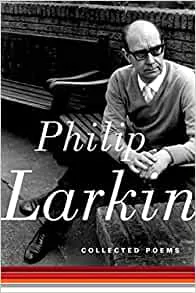
“Sad Steps” was published in Larkin’s final volume of poetry, High Windows, in 1974. It’s a subtly searing contemplation on the loss of youth and the growing awareness of creeping age – and mortality.
The high romance and soaring visions of the speaker’s younger days have evaporated, leaving the night sky, formerly a source of inspiration and wonder, as something merely cold and diminished. Rather than reflecting on its beauty, the speaker “shivers slightly” and heads back to the warmth of the bed. For Larkin, everything seems washed out and faded. Even the barren beauty of the moon is a reminder of how the enthusiasm of his younger days has calcified into something else.
“A reminder of the strength and pain / Of being young; that it can’t come again.”
Philip Larkin, “Sad Steps”
Check out this poem on Amazon; click here.
9. Henry Wadsworth Longfellow, “The Rainy Day”

Everyone knows the feeling of a somber, gray, rain-sodden day, and this poet perfectly sums up the feeling of incipient melancholy. In “The Rainy Day,” Wadsworth Longfellow parallels the battering wind and rain with life’s struggles, while the fallen leaves indicate hopes and dreams.
Sometimes, it can seem hard to go in the wake of such unrelenting hardships. At the piece’s close, however, the poet reminds us that there is always hope, no matter how difficult things may seem right now, despite the deluge.
“Behind the clouds is the sun still shining / Thy fate is the common fate of all.”
Henry Wadsworth Longfellow, “The Rainy Day”
Check out this poem on Amazon; click here.
10. Robert Frost, “Acquainted with the Night”

“Acquainted with the Night” is one of his most well-known- pieces, published in 1927. The poem suggests that sadness and a sense of isolation are universal to the human condition. On a nocturnal walk, the narrator feels disconnected from everyday life and those he encounters on his travels. The night becomes symbolic with more profound despair and a sense of aimlessness.
There is hope, though. If we pay careful attention, it’s delivered in the poem’s opening line: “I have been one acquainted with the night.” The use of the past tense suggests that – even should it return – the narrator has come out the other side of his malaise.
“I have walked out in rain – and back in rain. / I have outwalked the furthest city light.”
Robert Frost, “Acquainted with the Night”
Check out this poem on Amazon; click here.
11. T.S. Eliot, “The Waste Land”
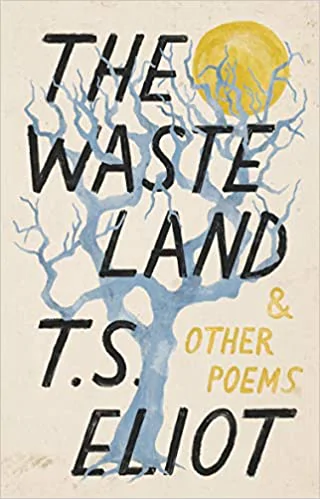
This poem is a modernist masterpiece and a profound reflection on how World War I and its shadow loomed over the generations that both experienced and followed it. Eliot’s “The Waste Land” is a poetic monologue featuring multiple narrators that crosses geographical and temporal borders.
The themes of this landmark poem – terror, futility, creeping dread, and alienation – are imbued in every line. The overwhelming sense of post-war suburban alienation is a powerful testament to the ongoing societal ripple effect of the conflict.
“A heap of broken images, where the sun beats, / And the dead tree gives no shelter, the cricket no relief.”
T.S. Eliot, “The Waste Land”
Check out this poem on Amazon; click here.
12. Emily Dickinson, “It Was Not Death”
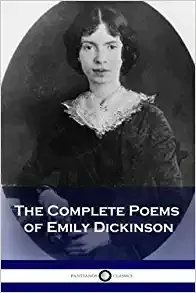
The subjects of this poem by American writer Emily Dickinson are despair and hopelessness. The piece’s darkly surreal imagery – “It was not Night, for all the Bells / Put out their Tongues, for Noon” – accurately sums up the feeling of a depression that can’t be understood or rationalized.
For those who have suffered from depression, the poem’s first line, “It was not death, for I stood up,” accurately depicts the husklike feelings it can engender. As if we are walking, talking, and acting mechanically, and that “everything that ticked – has stopped / And space stares – all around / Or Grisly frosts – first Autumn morns / Repeal the Beating Ground.”
“As if my life was shaven, / And fitted in a frame.”
Emily Dickinson, “It Was Not Death”
Check out this poem on Amazon; click here.
13. Alison Pick, “Depression”

The Canadian writer Alison Pick is a poet and the author of three novels, one of which, Far to Go, was nominated for the Booker Prize. “Depression” is a modern look at mental illness and a sorrowful reflection on how depressive illness can run in families.
Pick references pills, heaviness, and a near-suffocating sense of numbness in the poem. The line “soon it will all be over” is purposefully oblique and could equally refer to depression or life itself.
“I come by it honestly, / an heirloom passed / from my father / and grandmother before me.”
Alison Pick, “Depression”
Check out this poem on Amazon; click here.
14. Jane Kenyon, “Having it Out with Melancholy”

This is one of the best poems to read to understand what it is like to experience depression recurrently throughout life. Kenyon writes about first encountering depression “behind a pile of linen” in the nursery and recalls how the condition follows her through childhood, adolescence, and adulthood. The speaker describes feeling like “a piece of burned meat,” unable to enjoy family life or simple pleasures such as reading or seeing beautiful flowers.
“Having it Out with Melancholy” ends with hope, though. The final stanzas describe how the drug Nardil brings the narrator back to herself, restoring “ordinary contentment” that feels overwhelming in its beauty.
“You taught me to exist without gratitude.”
Jane Kenyon, “Having it Out with Melancholy”
Check out this poem on Amazon; click here.
15. Henry Howard, Earl of Surrey, “The Soote Season”

“The Soote Season” may not be one of the most famous poems on this list. Still, it was one of the very first English language sonnets written and is a strikingly written description of how a creeping depression affects the narrator with the coming of the spring (“soote” means “sweet” in Old English).
The poem captures what most of us have felt at some point: the awareness of joy and the inability to feel the same happiness. The brightness of life, when we can’t experience it ourselves, can make things seem even worse.
“And thus I see among the pleasant things / Each care decays and yet my sorrows spring.”
Henry Howard, “The Soote Season”
Check out this poem on Amazon; click here.
16. Stevie Smith, “The River God”

Surreal, strange, and haunting, “The River God” is a contemporary poem that, as with most poetry, can be interpreted in many different ways. While it can be understood as exploring nature’s seductive and destructive qualities, its tone is inexpressibly sad- the River God longs for his “dear one” to stay with him. Despite its fanciful subject matter, the poem touches on a universal human experience: loneliness and a yearning for love that stays with us regardless of age.
“Oh will she stay with me will she stay / This beautiful lady, or will she go away?”
Stevie Smith, “The River God”
Check out this poem on Amazon; click here.
17. Anne Sexton, “The Fury of Rainstorms”

This poem portrays how, when suffering from depression, every element of life can be colored by it. Even the raindrops themselves, hitting against the window, become wounded ants and, from there, bring death and the grave to mind.
“The Fury of Rainstorms” effectively evokes what it’s like to struggle daily with mental health issues and the lack of respite from hopelessness and despair. There’s solace, though, in the final lines of the poem: despite her melancholy, the narrator knows that going about simple household tasks can lift, somewhat, the clouds.
“Depression is boring, I think.”
Anne Sexton, “The Fury of Rainstorms”
Check out this poem on Amazon; click here.
18. Sylvia Plath, “Mirror”
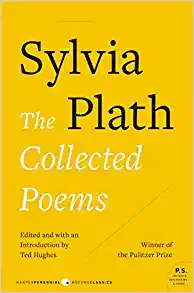
Written shortly after the birth of her first child in 1961, the poem is narrated by a personified mirror, who (literally) reflects on the looker’s gradual loss of youth and beauty. In its concern with aging, the poem forces the woman who looks in the glass daily to confront what it means to age and how the gradual fading of a youthful aspect will affect her life.
“Mirror” is a powerful contemplation of how the aging process involves accepting our morality. It also compels us to question who we will be when the physical qualities of youth have left us.
“A woman bends over me / Searching my reaches for what she really is.”
Sylvia Plath, “Mirror”
Check out this poem on Amazon; click here.
19. Christina Rossetti, “Shut Out”
Published as part of her first collection of poems, Goblin Market and Other Poems 1862, this poem tells how the narrator comes across a beautiful garden but is denied access to it. With clear parallels to the Biblical story of the Garden of Eden, “Shut Out” can be read as an allegory concerning things irrevocably lost and a lifelong yearning to regain them: “The door was shut. I looked between / Its iron bars; and saw it lie, / My garden, mine, beneath the sky.”
“For nought is left worth looking at / Since my delightful land is gone.”
Christina Rossetti, “Shut Out”
Check out this poem on Amazon; click here.
20. Elizabeth Bishop, “One Art”
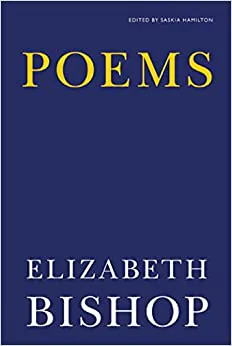
Elizabeth Bishop was no stranger to depression. She suffered profound personal sadness following the deaths of her mother and partner, and these feelings of despair and hopelessness suffuse much of her written work.
“One Art” suggests that losing things can become an art form we practice throughout life. Bishop suggests that if we “practice losing farther, losing faster,” building up from the loss of small items to people we love, then perhaps the pain of the latter will be more bearable. As the poem continues, it becomes evident that writing poetry itself is the catharsis the narrator seeks.
“The art of losing isn’t hard to master; / so many things seem filled with the intent / to be lost that their loss is no disaster.”
Elizabeth Bishop, “One Art”
Check out this poem on Amazon; click here.
21. Edgar Allan Poe, “Alone”
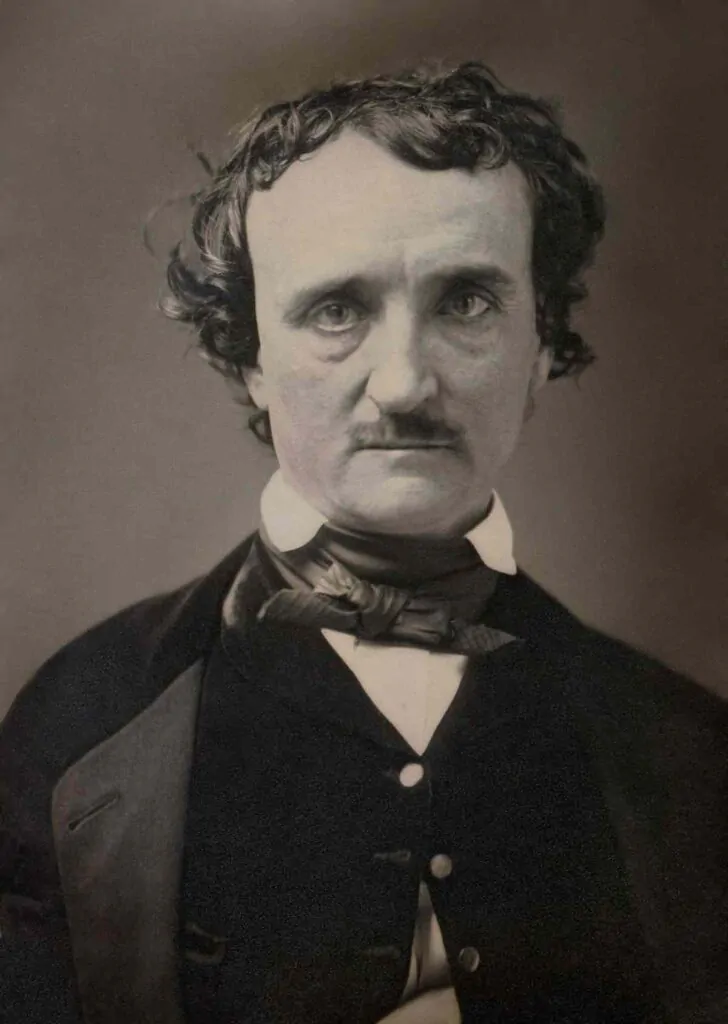
Even though Edgar Allan Poe is probably best known for his works focusing on horror, he is also well known for publishing poems on depression. In 1829, he published a poem titled “Alone,” which many believe is an offshoot of his childhood as an orphan. The poem describes what it is like to feel alone. He doesn’t feel physically alone but also emotionally and psychologically alone.
Edgar Allan Poe struggled with a tremendous amount of tragedy in his life, and this is an important poem because it provides some insight into what he might have been feeling. It can also be an excellent way for others to describe their feelings if they struggle to articulate them.
“From childhood’s I have not been
Edgar Alan Poe, “Alone”
As others were—I have not seen
As others saw—I could not bring
My passions from a common spring—
From the same source I have not taken
My sorrow—I could not awaken
My heart to joy at the same tone—
And all I lov’d—I lov’d alone—”
Check out this poem on Amazon; click here.
22. Mary Oliver, “Wild Geese”

Mary Oliver is a famous poet who often published poetry about mental health issues and the beauty of nature. In particular, she loved to publish poems about birds, with one of her most famous examples being titled “Wild Geese.”
This is an excellent poem for people struggling with depression because it reminds them to try to connect with the world around them. This includes not only looking inward but outward as well. Try to connect with nature, friends, and family members. The poem creates a vivid image of geese in flight.
The reader should imagine themselves as one of the birds in the poem, finding a way to rise above sadness, loneliness, and despair. This poem can help people reframe their mindset and overcome feelings of depression.
“Tell me about despair, yours, and I will tell you mine.
Mary Olliver, “Wild Geese”
Meanwhile the world goes on.
Meanwhile the sun and the clear pebbles of the rain
are moving across the landscapes,
over the prairies and the deep trees,
the mountains and the rivers.
Meanwhile the wild geese, high in the clean blue air,
are heading home again.”
Check out this poem on Amazon; click here.
23. Anne Sexton, “Wanting To Die”
Anyone who has ever felt depression can probably relate to this poem. This poem, “Wanting to Die,” is about someone struggling with suicidal ideation. It talks about how people who struggle with thoughts of suicide have a difficult time being understood by other people. Finally, the poem describes death, almost waiting for the narrator.
People need to understand if they have thoughts of suicidal ideation, they do not need to face them by themselves. Even though the poem describes a narrator who has a difficult time struggling with loneliness, the poem also talks about things that the narrator would leave behind by committing suicide. People who struggle with mental health issues must remember that there are people who love them and that all they need to do is reach out and ask someone for help.
“Even then I have nothing against life.
Anne Sexton, “Wanting To Die”
I know well the grass blades you mention,
the furniture you have placed under the sun.
But suicides have a special language.
Like carpenters they want to know which tools.
They never ask why build.
Twice I have so simply declared myself,
have possessed the enemy, eaten the enemy,
have taken on his craft, his magic.”
Check out this poem on Amazon; click here.
24. A.E. Housman, “Tarry Delight, So Seldom Met”
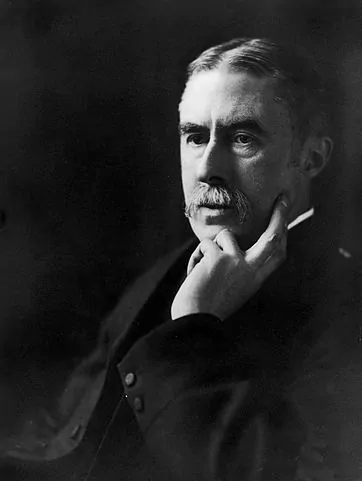
Housman was known for writing about melancholy and heartbreak. Therefore, they have been read by countless people who struggle with mental health issues, including this one, titled “Tarry Delight, So Seldom Met.” This is a poem that focuses on how happiness, like all other feelings, will eventually pass.
Ultimately, we may feel like we are left to struggle, but there are ways to find happiness. Even though it may be difficult, there are ways for us to keep going. The let-down after happiness has gone away can be difficult, but we do not need to go through it alone.
“Tarry, delight, so seldom met,
A.E. Housman, “Tarry Delight, So Seldom Met”
So sure to perish, tarry still;
Forbear to cease or languish yet,
Though soon you must and will”
Check out this poem on Amazon; click here.
25. Philip Larkin, “Aubade”
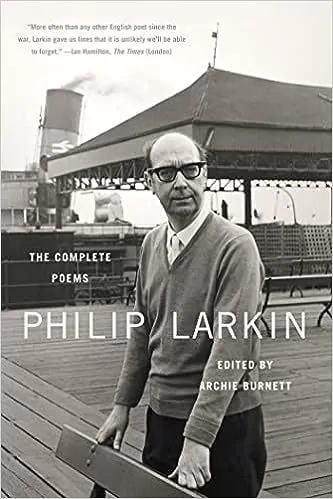
People who struggle with depression often have a difficult time sleeping at night. Therefore, this poem, “Aubade,” is the perfect way to dive into this issue. Some people struggle with depression and wake up at four in the morning, struggling with despair.
It is important to realize that the poem can also be reassuring. Even though it can be challenging to lie awake at four in the morning, art can also be created using those terrifying feelings. That is what makes this poem so great for people who are dealing with depression.
“I work all day, and get half-drunk at night.
Philip Larkin, “Aubade”
Waking at four to soundless dark, I stare.
In time the curtain-edges will grow light.
Till then I see what’s that’s always there:”
Check out this poem on Amazon; click here.
26. Mary Oliver, “Don’t Hesitate”
Another beautiful Mary Oliver poem is called “Don’t Hesitate” that is perfect for people with a history of struggling with depression or anxiety. Sadly, many people cannot enjoy a happy moment because they are convinced it cannot last. In addition, many people have a history of trauma that may make it difficult to believe their happiness is real. This poem encourages people to embrace those feelings of happiness, not overlook them.
Sometimes, it can be challenging for people to bask in unbridled joy, particularly when they are convinced that something is going to happen that will take it away from them. Even though the poem acknowledges this is a possibility, it also wants people to take advantage of every moment of joy they have. No matter how small it is, it is worth enjoying. If you’re looking for more poems to explore, you might also enjoy our list of Mary Oliver poems.
“If you suddenly and unexpectedly feel joy,
Mary Oliver, “Don’t Hesitate”
don’t don’t taste. Give in to it. There are plenty
of lives and whole towns destroyed or about
to be. We are not wise, and not very often
kind. And much can never be redeemed.
Still, life has some possibility left. Perhaps this
is its way of fighting back, that sometimes
something happens better than all the riches
or power in the world.”
Check out this poem on Amazon; click here.
*Depression is a serious mental health condition. If you or someone you know is struggling with depression, seek professional help. The following resources are intended to provide information and support but should not replace medical advice or treatment.
Resources:
- Substance Abuse and Mental Health Administration (SAMHSA) Helpline: 1-800-662-4357
- National Suicide Prevention Lifeline: 1-800-273-8255
- Samaritans: 1-877-870-4673
- National Hopeline Network: 1-800-442-4673
- Veterans Crisis Line: 1-800-273-8255